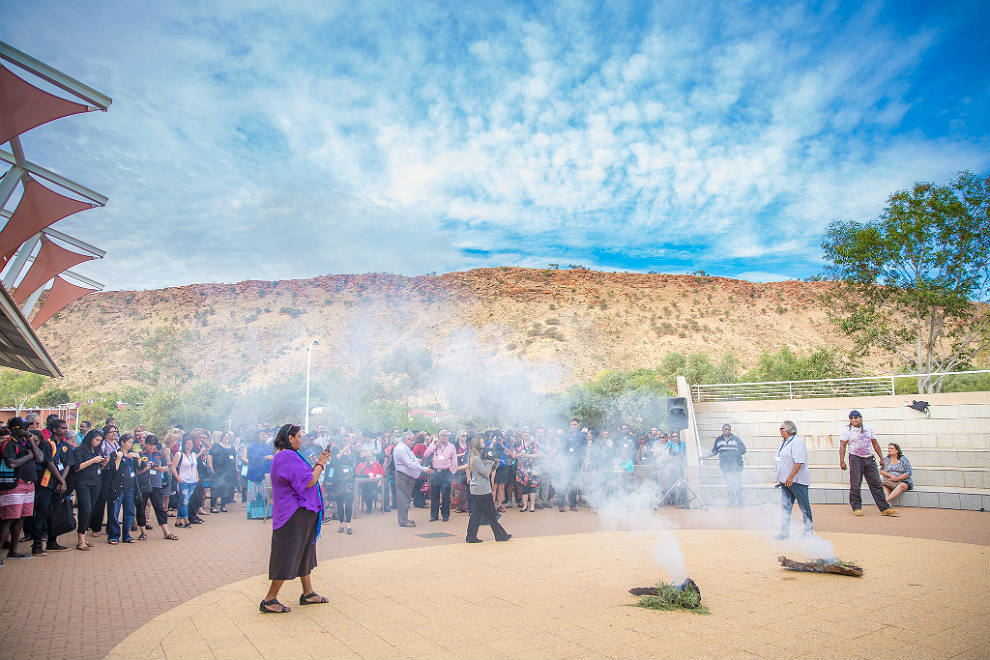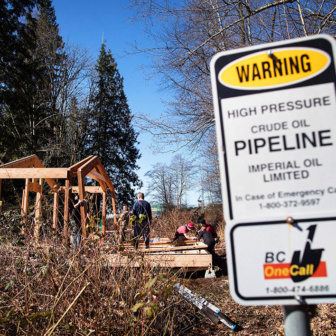Aboriginal suicide is different: that’s one of the key messages that came out of the inaugural Aboriginal and Torres Strait Islander Suicide Prevention conference in May this year. Other messages follow from that one: local communities know best how to understand causes and build solutions; and supporting and strengthening Aboriginal culture is a big part of any solution. Underlying these statements, which I consider indisputable, is another that I would question. It says to non-Indigenous Australians, “This is not your trauma – stay away.”
It’s understandable that families suffering grief don’t believe wider society will understand them. But the epidemic of Aboriginal suicide ripping through remote communities, particularly in the Kimberley region of Western Australia, is a tragedy for all of us. Some media reporting may have been deplorable, but their views aren’t representative of wider Australian empathy and care.
Local support and prevention is vital, and cultural support essential, but state intervention also plays a part. It can be particularly powerful when both work together, and a recent joint initiative of Western Australia’s Department of Aboriginal Affairs and Department of Culture and Arts has that potential.
In a proposal put to the state cabinet in May but not yet released, the two departments argued for a “cultural investment strategy” for the state’s Aboriginal population. Such a strategy would “use the support of cultural activities to improve cultural growth, social cohesion and engagement; and use culturally based activities to improve outcomes in health, education, community safety and employment.”
Putting aside the impersonal language, this strategy offers support for culture in local Aboriginal communities of the kind that, to date, has been targeted mainly at urban, white “high culture.”
This is a strategy for today’s troubled times. It is hard to remember that there was a time when Aboriginal people in the Kimberley region were not greatly at risk of suicide. As Murray Chapman, a psychiatrist who has worked in the Kimberley for fourteen years, said in a recent interview with Australian Doctor:
From what we can gather in the Kimberley, until the ’60s or ’70s, and even the early ’80s, there was little in the way of suicide. But then it took off. It was at the time of the first royal commission into deaths in custody, and obviously it was partly about suicides happening in prison. When you look at the massive publicity in those days there was a recognised media effect [the “Werther effect” of copycat suicides] that helped push it into the community. It was probably already going that way, but [the publicity] really boosted it.
According to the federal government’s Indigenous Suicide Prevention Evaluation Project, in this region of 36,800 people, where 46 per cent are Aboriginal, around one hundred Aboriginal suicides occurred in the ten years to 2010. Over the next five years there were another one hundred Aboriginal suicides, or a doubling of the rate. The Kimberley Aboriginal Law and Cultural Centre, which is based in Fitzroy Crossing and in constant touch with the affected communities, says there were nineteen Aboriginal suicides in the Kimberley in the first three months of 2016.
“Aboriginal suicide is not an individual phenomenon, it is a collective and community phenomenon,” says KALACC coordinator Wes Morris. “We must focus on the community and not on the individual. Governments pathologise the phenomenon as ‘sick individuals.’ Government investments in response to Aboriginal suicide are heavily weighted towards clinical interventions which are predicated on an individualised conception.”
Young people are at the highest risk. The Australian Institute of Health and Welfare estimates that nearly 5 per cent of all Indigenous deaths are suicides. Among fifteen- to nineteen-year-olds, this is five times the rate of the non-Indigenous population. No one knows for sure why this is so, and no one knows for sure what to do about it, but good ideas are most likely to come from those most affected.
At a roundtable held by the Indigenous Suicide Prevention Evaluation Project in Broome last year, local people were overwhelmingly concerned with social rather than medical improvements. Their own identified themes for discussion were the impact of social factors; the need for empowerment of families and communities; mental health issues; trauma; lack of services and responses; and the need for local solutions and leadership interventions.
Murray Chapman’s observation rings true for those of us who have lived side by side with affected families, co-workers and friends in the Kimberley region. Initially, in the 1980s, each incident provoked suspicion of foul play, such was our incredulity at reports of suicide among people, remarkable for their resilience, who had survived a much more cruel period of colonisation.
This reaction now seems like a foolish attempt to run away from the facts. It is more likely that the cause was terminal pain and feelings of despair. As Tom Calma, co-chair of Reconciliation Australia, said in response to a recent report that one-in-ten young Indigenous males rate their happiness level at “zero out of ten”:
As a nation we cannot let our young people despair and lose hope. Our young people have to see they have a future and they need access to mental health and alcohol and drug services and suicide prevention programs and vulnerable communities must be empowered and supported to lead their own recovery.
I think that it is no coincidence that things have got worse psychologically for Aboriginal people as they have become better in material terms. The things that bind Aboriginal people together in social solidarity – shared language, sacred areas, religious ceremonies, ancient land-related values – have been consistently undermined. These are not part of the wider society’s economic development agenda, or are believed to actively undermine it. At the same time, Aboriginal material conditions, land ownership and shares in the fruits of economic enterprises – those things that make Aboriginal people “more like us” – have improved greatly since the 1980s.
Chapman says that threats of suicide from Kimberley youth are the “lingua franca of despair.” For young people, white people’s apparently wondrous lives, presented daily on the television and minute by minute on Facebook, might at last be within their realm of reality, but are seemingly beyond their reasonable aspirations. In their homes there is still immense interpersonal poverty.
Poverty itself does not cause suicide, but the resilience needed to confront poverty daily can often be lacking. Many of the at-risk group between fifteen and thirty-five years of age reach back for a handhold in the culture of their communities and find it doesn’t have the weight to support them anymore.
As KALACC put it in its submission to the WA government:
We can’t undo social trauma overnight but we can build protective factors. We cannot overnight “solve” or “fix” alcoholism, child abuse, unemployment, lateral violence, or post-colonial trauma including the impacts on the stolen generation. But we can invest significantly in protective factors which enable people to best respond to these challenges.
The ABC recently published an article on Aboriginal child suicide titled “Lost Between Two Worlds.” We should remind ourselves that “two worlds” is only a metaphor. There is only one world – they are part of our world, we are part of theirs. Continually recycling the “two worlds” metaphor can have pernicious effects. It places young Aboriginal people as a kind of mutant, bound only to self-destruct. For policy-makers and well-meaning commentators it presents only two unachievable solutions: recreating a separate, sealed-off culture, segregated but safe, or miraculously teleporting entire populations into a modern, wage-supported, nuclear-family future. No wonder the problem appears intractable.
The recent WA initiative from the Department of Aboriginal Affairs and the Department of Culture and the Arts takes an important step away from this binary dilemma. A good deal of the strategy involves supporting Aboriginal employment in the art industry, but it takes a significant step further than this. These departments say that the strategy would
be developed to address the underlying causes of social dysfunction through connecting Aboriginal people to their culture through cultural maintenance activities that reinforce traditional values, roles and responsibilities, in… a specific area of high social and economic dysfunction.
The new strategy would “use the support of cultural activities to improve cultural growth, social cohesion and engagement, and to use culturally based activities to improve outcomes in health, education, community safety and employment.” This looks like what Kimberley communities have been asking for. It may also give a hint of how mainstreaming of Aboriginal services, which has been bipartisan Commonwealth policy since 2005, can be made to work. It may show us that the mainstream can be expanded and adapted to be inclusive of Aboriginal diversity. It may remind us that there is only one world. Although our neighbours don’t look, talk, think or feel like us, they are within the same bounds of shared human values. We need to move over and give them space to be themselves. •




